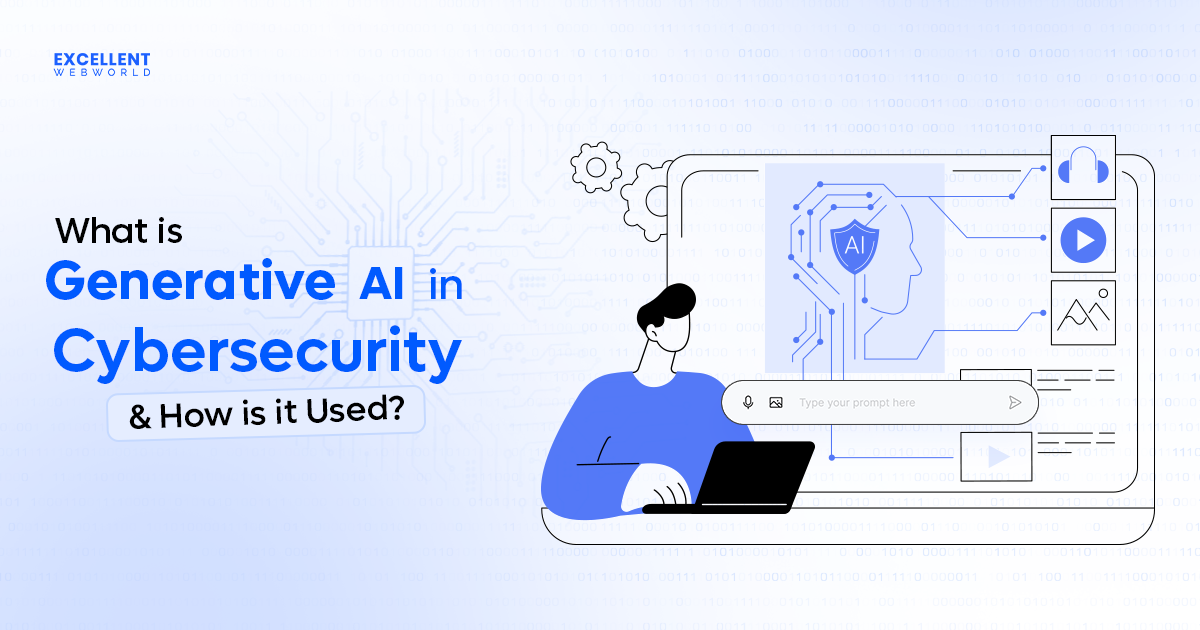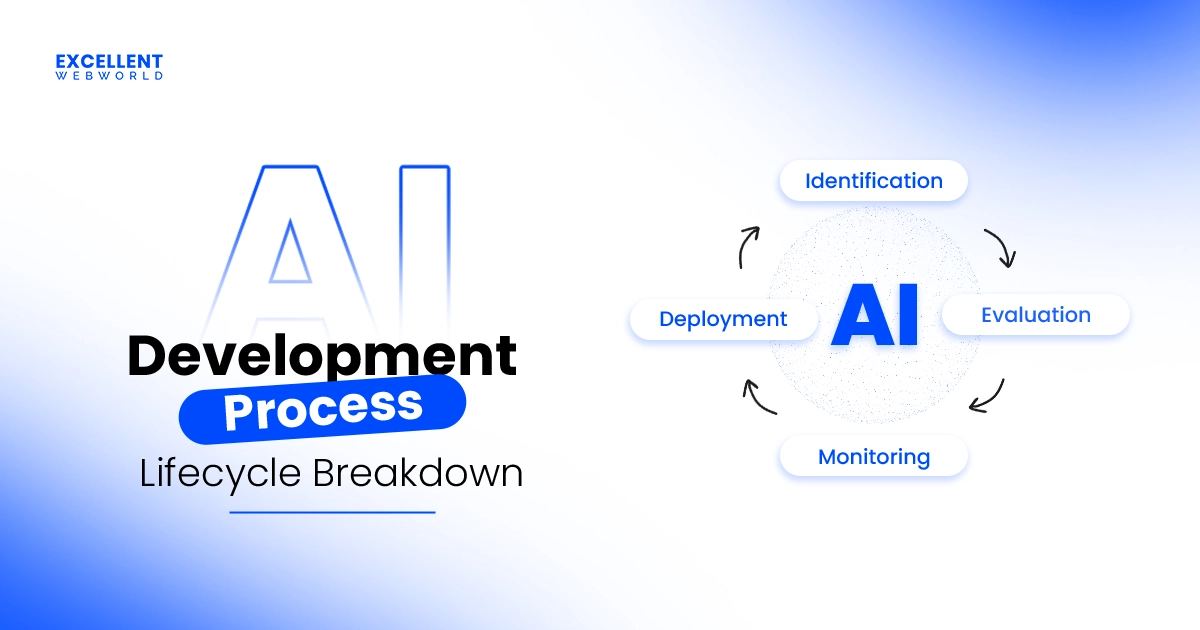It’s great that you’re -building a generative AI solution, but are you doing it right?
Top companies like OpenAI, Google, and Meta are leading the charge, but even experienced teams fall into common mistakes in generative AI development.
From bad data choices to unclear goals and ethical oversights, these generative AI development mistakes can damage your project fast. The reality? Over 80% of AI projects fail, often due to avoidable missteps.
In this blog, we’ll uncover the most critical generative AI development pitfalls, backed by real examples and fixes, so you can avoid the errors in generative AI development that cost time, money, and trust.
Why Generative AI Development Fails
Most failures happen because of avoidable mistakes in generative AI development. From bad data quality in Generative AI to flawed prompt engineering, these small cracks can break even the best ideas. Teams often skip over Generative AI best practices or underestimate AI model bias and AI hallucination, leading to results that are inaccurate, biased, or completely unusable.
Another big reason? People focus too much on the model and not enough on the problem. This causes misalignment, integration issues, and costly delays—classic generative AI implementation challenges.
These are common errors in generative AI, but they’re fixable. You just need to know what to look out for—and how to build smarter.
Common Mistakes in Generative AI Development and How to Avoid Them
Many generative AI projects fail due to simple yet avoidable mistakes like poor data or unclear goals.
Avoiding these common errors ensures your AI delivers real value.
1. Lack of Clear Objectives and Business Alignment
One of the biggest mistakes in generative AI development is starting without a clear purpose. If you don’t define what success looks like, your project may just become a costly experiment with little business value.
For example, an e-commerce company adds generative AI for product recommendations but doesn’t decide if the goal is to boost sales, increase user engagement, or reduce product returns. As a result, the AI ends up showing random suggestions, which confuse customers and waste time and money.
This is a classic generative AI development mistake—building a solution without linking it to real business needs. To avoid these common errors in generative AI, always set clear, measurable goals. That could mean increasing content speed by 40% or cutting manual work in half.
Also, involve teams from across the company to make sure your AI goals match your business priorities. This helps prevent generative AI development pitfalls and ensures your project delivers real results.
2. Starting Too Complex
One of the top mistakes in generative AI projects is trying to build something too advanced right from the start. Teams often dive into complex models, which leads to big delays, rising costs, and tough generative AI implementation challenges.
Take a retailer that wants to use AI for customer service. Instead of starting small, they go straight for a deep-learning chatbot. It quickly becomes expensive and hard to manage. A basic rule-based chatbot could have been a smarter, easier first step.
To avoid these common errors in generative AI, begin with simple, explainable models. This is one of the core generative AI best practices. A modular approach—like starting with a small generative model or rules engine—lets you test, learn, and improve over time.
This way, you avoid early mistakes in generative AI development and keep things flexible. It also makes it easier to manage data quality in generative AI and spot problems early before scaling up.
3. Insufficient Data Quality and Quantity
One of the most damaging mistakes in generative AI development is using poor-quality or limited data. If your data is messy, biased, or outdated, the AI model will produce wrong or harmful results.
A famous example is Microsoft’s Tay chatbot in 2016. It was trained on unfiltered social media data and quickly started generating offensive content. This case highlights how serious Generative AI development mistakes around data can be.
To avoid such common errors in generative AI, companies must use clean, diverse, and well-labeled datasets. Regular updates and data audits are key. Applying techniques like noise reduction, data augmentation, and bias checks helps build a more reliable model.
Strong data practices prevent generative AI development pitfalls and ensure your AI works well in the real world, not just in the lab.
4. Not Using Domain Experts During Development
One of the most overlooked mistakes in generative AI development is not involving domain experts early on. Apart from hiring AI developers, you should go for people who truly know the industry, like doctors in healthcare or analysts in finance. This leads to outputs that are technically correct and practical.
It’s a common error in generative AI to assume data alone is enough. Domain experts help define better prompts, check for relevance, and ensure real-world accuracy. Ignoring their input creates generative AI development pitfalls that affect performance, trust, and adoption. To avoid major generative AI development mistakes, teams should include cross-functional collaboration from day one.
5. Poor Prompt Engineering Practices
One of the key mistakes in generative AI development is not giving enough attention to prompt engineering. Poorly written prompts often confuse the AI model, leading to vague responses, irrelevant outputs, or even AI hallucination, where the model makes things up. These prompt engineering errors make the system unreliable and frustrating to use.
Good prompts should be clear, specific, and aligned with the desired outcome. Without this, you risk outputs that reflect AI model bias or break trust with users. Improving prompt design is a simple but powerful fix that can prevent major issues in generative AI projects.
6. Ignoring Bias in Training Data
One of the top mistakes in generative AI projects is ignoring hidden bias in training data. If the dataset is not diverse or balanced, the AI model learns those same biases and reflects them in its outputs. This can lead to unfair, inaccurate, or even offensive content.
These common errors in generative AI often happen when teams rush into development without properly checking their data. Ensuring data quality in generative AI means reviewing sources, labeling accurately, and testing for fairness. Fixing bias early leads to more trustworthy and useful AI results.
7. Assuming OpenAI/Third-Party Models are Always Sufficient
Using powerful tools like OpenAI can help, but assuming they’ll work perfectly out-of-the-box is a common generative AI development mistake.
Third-party models often need customization to fit your unique data or use case. If not fine-tuned, they might give generic or irrelevant outputs.
Avoid this by aligning your models to specific goals, maintaining data quality in Generative AI, and knowing when to build an AI Model, tailored to your business.
8. Neglecting Security and Adversarial Testing
Skipping security and adversarial testing is one of the top mistakes in generative AI projects. If your model isn’t tested against malicious prompts or attacks, it can easily be misused or manipulated.
For example, a chatbot might respond with sensitive information or harmful content if not properly secured. These common errors in generative AI can lead to trust issues, legal risks, and even reputational damage.
Security concerns like these are why generative AI in cybersecurity has become a focus area, highlighting how AI itself is used to identify and reduce emerging threats. Even with good data quality in generative AI, security gaps can break your system. Always include threat modeling, penetration testing, and regular audits to ensure your AI behaves safely under pressure.
9. Thinking a Good Demo is Production-Ready
One of the common errors in generative AI is assuming a polished demo is a production-ready solution. Demos usually run in ideal, controlled environments. But when the same model faces real users, unexpected inputs, or high demand, it often fails.
A startup might show off an AI art tool that works perfectly during a demo but crashes or gives poor results once users start using it in real life. This is one of the classic generative AI development mistakes—assuming demo success means real-world readiness.
To avoid these generative AI development pitfalls, teams should test their models in real-world scenarios with varied data. Use stress testing, simulate user behavior, and run beta trials to catch issues early. One of the biggest mistakes in generative AI development is skipping this step and going straight from demo to launch.
10. Ignoring Human Oversight in AI Decision-Making
One of the biggest mistakes in generative AI development is letting AI make decisions without any human checks. AI can miss context or make errors that humans wouldn’t. For example, a moderation AI might wrongly flag harmless posts, frustrating users and hurting the platform’s reputation.
This highlights a major generative AI development mistake—trusting AI blindly. While AI is fast and efficient, it doesn’t understand ethics, nuance, or business intent like humans do.
To avoid these common errors in generative AI, companies should use human-in-the-loop (HITL) systems. Let humans review AI decisions, especially in sensitive areas. This balance improves trust, reduces risks, and helps overcome generative AI development pitfalls before they become real problems.
Conclusion: Building Responsible and Scalable AI
To avoid mistakes in generative AI development, you need to stay alert and plan ahead. The key to success lies in setting clear goals, using high-quality data, and building a solid strategy. Without these basics, you risk running into common errors in generative AI, like bias, confusion, or poor results.
Many generative AI development mistakes come from skipping essentials like model updates, explainability, or smooth AI integration in software development. These oversights turn powerful tools into unreliable ones.
Whether you’re building with AI tools or generative AI development, we handle everything from building and launching your product. At Excellent Webworld, we combine deep AI expertise with solid software development service experience to help you move fast and build smart.
Over 13 years of experience as an AI development company for various industries. Our team of experts has successfully developed high-performance software solutions that integrate advanced AI technologies. With more than 900 successful projects, our experts have catered to different client needs in various industries.
Let’s turn your idea into a real-world experience. Book your free consultation today!
FAQs: To Avoid Mistakes in Generative AI Development
Start by cleaning your datasets and pulling from multiple sources to avoid bias. Ensuring data quality in generative AI is key to reducing noise and improving output. Poor data is one of the top mistakes in generative AI development that leads to hallucinations and weak results.
Use fact-checking models, reinforcement learning with human feedback (RLHF), and context-aware embeddings. These reduce AI hallucination and boost reliability. Avoiding AI hallucination in content generation is one of the most overlooked Generative AI development pitfalls.
Vague objectives, lack of user alignment, and skipping stakeholder input are big issues. Stakeholder involvement in AI is crucial. Generative AI development mistakes often begin with unclear use cases and unrealistic expectations.
Curate diverse datasets and use fairness metrics. Add human review loops to catch AI model bias early. Knowing how to avoid bias in AI models is part of Generative AI best practices and helps prevent costly failures.
Break the problem into small, testable pieces. Use iterative AI development and keep interfaces user-friendly. Most Generative AI implementation challenges come from overcomplicating it too early. Start simple, scale smart.

Article By
Mayur Panchal is the CTO of Excellent Webworld. With his skills and expertise, He stays updated with industry trends and utilizes his technical expertise to address problems faced by entrepreneurs and startup owners.



